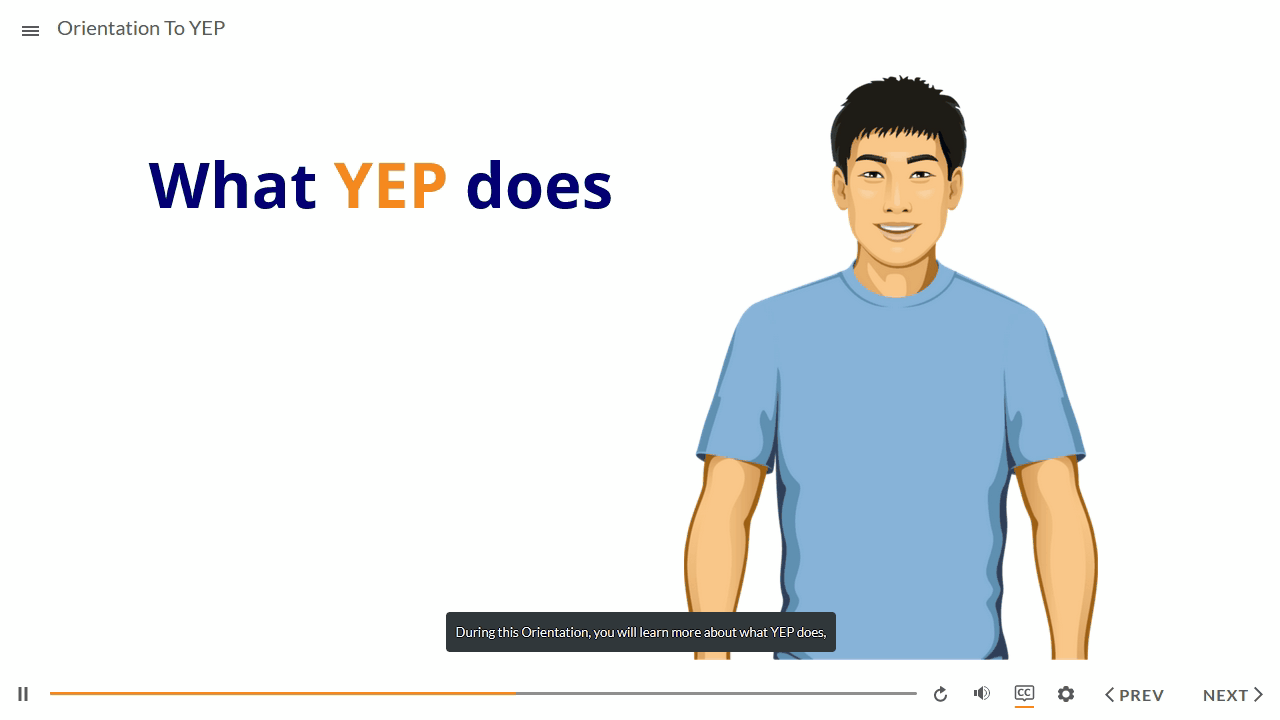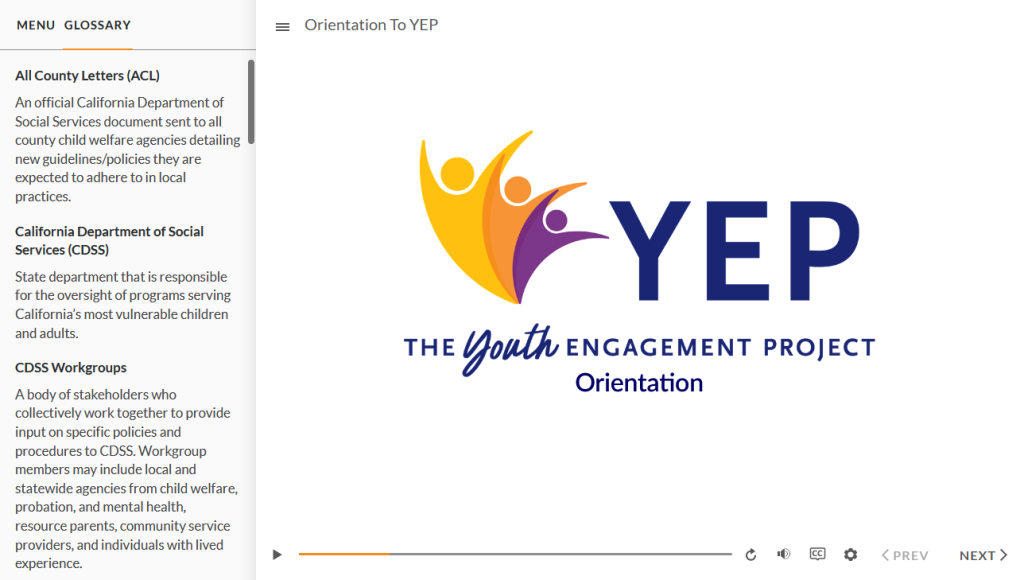The Orientation to Youth Engagement module was created for a human services organization in California. The audience is youth in California’s foster care system. This module features full voice over, and an on-screen character, named Kevin. As this module is aimed at youth, the project had a heavy emphasis on engagement.

The module is framed around Kevin, who is written as a former foster youth, who has moved through the child welfare system in California. The orientation is told through the story of Kevin’s own experiences. Kevin explores the various events and functions of the system, and describes his own experiences every step of the way.
Providing the learner with a character, and a human voice, enhances engagement. This is an aspect of gamification that isn’t featured enough. Humans like human connections, and human characteristics. By providing a human to connect to, the module invites the learner in, and grounds the content. It doesn’t speak at the learner, but rather to the learner, which is an important distinction.
I also focused on accessibility. The color palette is accessible, featuring both sufficient contrast and color-blind safe colors. The blue and orange combination came from the YEP branding, however, it was checked against WCAG standards.
Additionally, I used the built-in Glossary feature in Storyline to provide definitions for each acronym and keyword mentioned in the module. This is particularly important when working with jargon-heavy content, such as legal, medical, and government content. Learners may not have a way to ask for clarifications on content, or may not feel comfortable admitting to not knowing information. Providing a glossary is an easy way to provide answers to these questions, while also encouraging the learner to engage with self-help strategies.

This module was developed after Articulate’s accessibility update, and was an early attempt at understanding the way to put in place to built-in accessibility tools. The default player is used, as it provides the ability to customize the experience, and gives the learner agency over the playback of the materials.